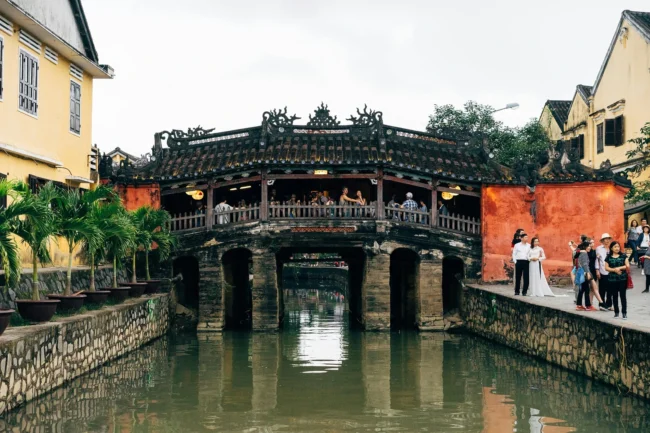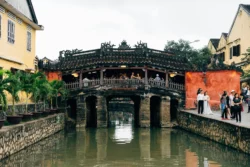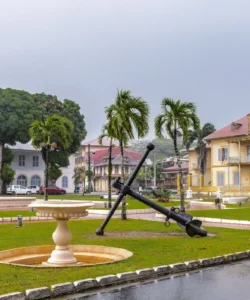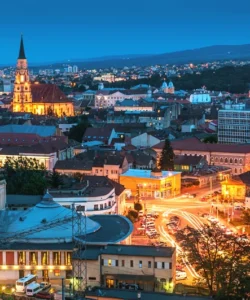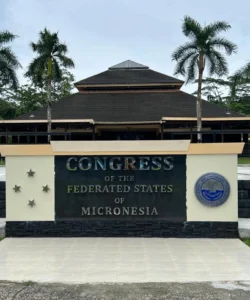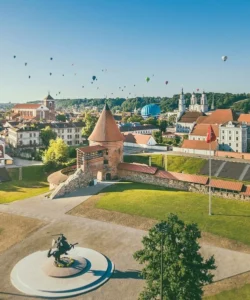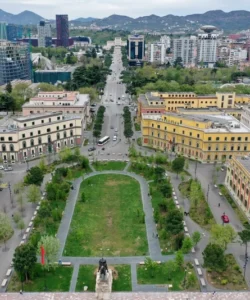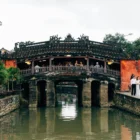Hoi An Ancient Town (Phố cổ Hội An) is an exceptionally well-preserved trading port located on Vietnam’s central coast, in Quang Nam Province. A UNESCO World Heritage Site, it flourished as a major international trading port from the 15th to the 19th centuries, attracting merchants from China, Japan, India, and Europe. Today, it mesmerizes visitors with its unique blend of indigenous and foreign architectural styles, lantern-lit streets, rich culinary scene, and tranquil atmosphere, offering a captivating step back in time.
Name: Hoi An Ancient Town (Phố cổ Hội An)
Address: Hoi An City, Quang Nam Province, Vietnam. It is located on the Thu Bon River estuary, about 30 kilometers (18.6 miles) south of Da Nang.
How to get there:
Hoi An is easily accessible, typically via Da Nang:
- From Da Nang International Airport (DAD):
- Taxi/Grab (Ride-hailing): The most convenient option, taking approximately 45 minutes to 1 hour.
- Private Car Transfer: Many hotels and tour operators offer pre-arranged private transfers.
- Local Bus: A more budget-friendly option, but slower.
- From Da Nang City/Train Station:
- Taxi/Grab/Private Car: As above.
- Local Bus: Regular bus services connect Da Nang to Hoi An.
- Walking: The Ancient Town itself is largely pedestrianized. Once in Hoi An, most exploration is done on foot. Many hotels are located within or very close to the Ancient Town, making it easy to walk everywhere.
- Cycling: Bicycles are a popular way to explore the town and its surrounding areas, including rice paddies and beaches.
Landscape and Architecture:
Hoi An Ancient Town’s landscape is defined by its gentle river setting and its remarkably preserved, eclectic architectural fusion:
- Thu Bon River: The tranquil Thu Bon River meanders through the town, with wooden boats (sampans) gently gliding along, adding to the picturesque scenery. The river played a crucial role in the town’s history as a trading port.
- Pedestrian-Friendly Streets: The core of the Ancient Town is car-free for most of the day and evening, creating a relaxed and safe environment for walking and cycling. The narrow, winding streets contribute to its intimate charm.
- Architectural Fusion: The buildings showcase a unique blend of architectural influences from various cultures:
- Traditional Vietnamese Tube Houses: Characterized by their narrow facades and long depths, designed to maximize river frontage for trade.
- Chinese Shophouses and Assembly Halls: Many buildings feature Chinese-style tiled roofs, carved wooden elements, and vibrant red and gold decorations. The Assembly Hall of the Fujian Chinese Congregation (Fukian Assembly Hall) is particularly ornate, with a stunning triple-gated entrance.
- Japanese Houses: Evident in structures like the Japanese Covered Bridge, with its distinctive tiled roof and unique design.
- French Colonial Buildings: Pastel-colored buildings with arched windows and shutters, reflecting the French influence.
- Lanterns: Hoi An is famous for its thousands of colorful silk lanterns that illuminate the streets and hang from every storefront at night. These lanterns are a signature architectural and cultural feature, creating a magical, romantic glow.
- Wooden Structures and Courtyards: Many buildings are constructed from durable hardwoods, with carved wooden facades and interior courtyards.
- Tiled Roofs: A common feature across various architectural styles, contributing to the town’s unified aesthetic.
- Ancient Wells: Such as the Ba Le Well, providing fresh water to the community for centuries.
What makes it famous:
Hoi An Ancient Town is famous for:
- UNESCO World Heritage Site: Inscribed in 1999 for being an exceptionally well-preserved example of a Southeast Asian trading port from the 15th to the 19th century, with its buildings and street plan reflecting indigenous and foreign influences.
- Unique Architectural Heritage: Its unparalleled fusion of Vietnamese, Chinese, Japanese, and French colonial architectural styles, preserved in nearly original condition.
- Lantern Festival/Lantern-Lit Streets: The nightly illumination of the town by thousands of colorful silk lanterns, especially during the monthly Lantern Festival, creates an enchanting and romantic atmosphere that is world-renowned.
- Japanese Covered Bridge: This iconic 18th-century bridge, with a pagoda on one side and a temple accessible from the other, is a symbol of Hoi An and a testament to its multicultural past.
- Tailoring Services: Hoi An is a global hub for bespoke tailoring, where visitors can have custom-made clothes produced rapidly and affordably.
- Culinary Delights: It boasts a rich and unique culinary tradition, with famous dishes like Cao Lau (noodles), White Rose dumplings, and Banh Mi (Vietnamese baguette sandwich) that draw food lovers.
- Tranquil Atmosphere: Its largely pedestrianized streets and gentle pace offer a stark contrast to the bustling cities, providing a relaxing and charming experience.
Differences from some other wonders:
Hoi An Ancient Town distinguishes itself from other historical sites and urban centers in several key ways:
- Preservation of a Trading Port: While many cities have historical districts, Hoi An’s fame lies in its exceptional preservation as an entire Southeast Asian trading port, not just isolated buildings. It captures the spirit of a complete commercial hub, unlike many ancient cities that might be ruins or have been completely modernized.
- Car-Free (Mostly) Immersive Experience: Its largely pedestrianized core for most of the day and evening allows for an immersive, tranquil exploration that is rare in busy urban historical areas. This absence of traffic significantly enhances the historical ambiance.
- Lantern Culture as a Defining Feature: The ubiquitous and artistic use of silk lanterns to illuminate and decorate the entire town is a highly specific and visually stunning cultural practice that defines Hoi An’s identity, especially at night. While other places might use lanterns for festivals, here it’s an everyday, artful display.
- Harmonious Multicultural Architecture: While other places have foreign influences, Hoi An’s architecture is a particularly seamless and charming blend of distinct Asian and European styles, creating a unique aesthetic that feels organic rather than jarring.
- Living, Functioning Town: It’s not a museum piece but a living, breathing town where residents continue to live, work, and conduct business in the same historic buildings, giving it a vibrant authenticity.
In essence, Hoi An Ancient Town is a magical and timeless wonder, a meticulously preserved jewel that offers a captivating journey through centuries of multicultural exchange, all beautifully illuminated by the soft glow of its iconic silk lanterns.
